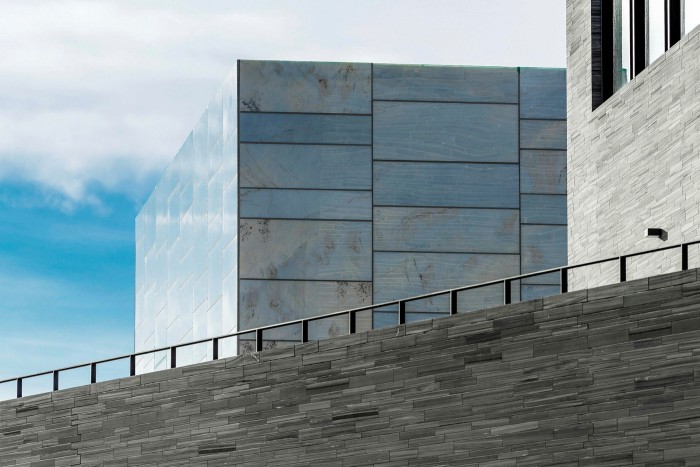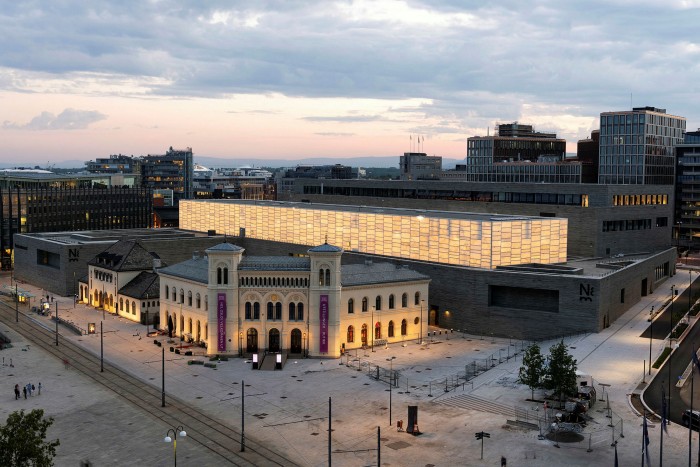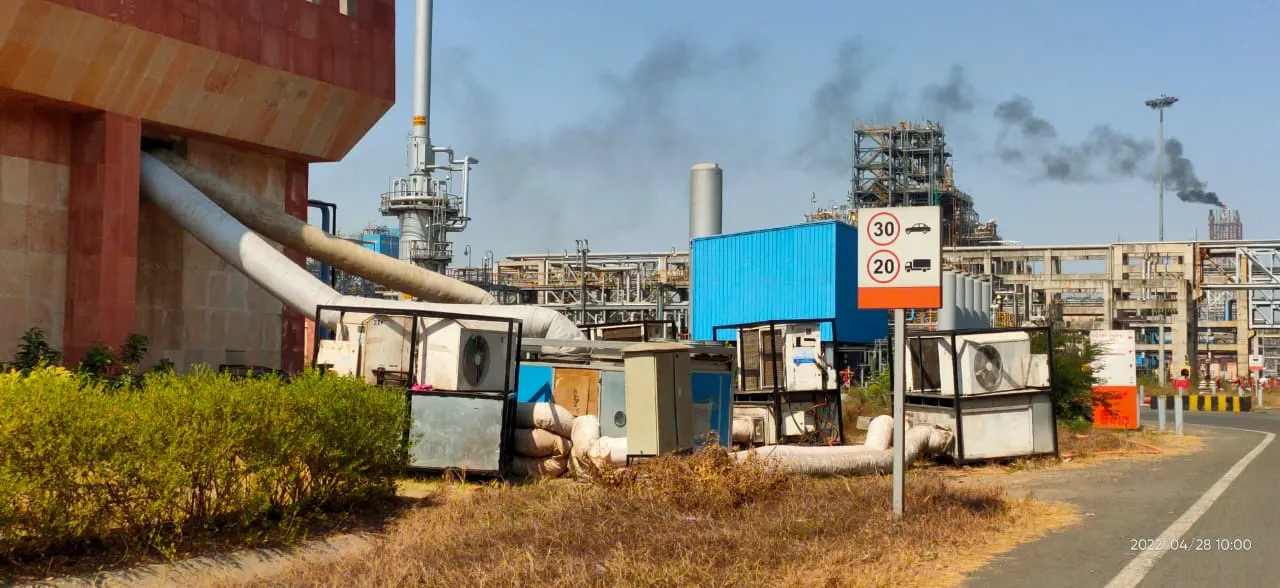Norway’s new national museum delivers a monumental home for Munch and more
[ad_1]
The new Countrywide Museum of Norway is not messing about. It is enormous and its slate partitions engulf Oslo’s previous West practice station, as if that setting up experienced been dropped into a quarry. It appears to be like an overreaction to the 1994 episode in which Munch’s “The Scream” was stolen by burglars who put a ladder against the old museum and lifted the painting off the partitions. They left a postcard looking through “Thanks for the weak security”.
On my stop by, a week prior to the opening, I had to wait whilst guards radioed, deactivated alarms and established to operate peeling back again a substantial metal doorway to the Munch home. “The Scream”, which was recovered afterwards that year, seems as if it will be properly contained.
Munch’s area is only a little element of this new making which has, apparently, far more exhibition area than the Rijksmuseum in Amsterdam and is the most significant in the Nordic nations around the world. The architects have been picked in an international level of competition launched in 2009, but I confess that I had in no way listened to of the winner, Klaus Schuwerk, a German architect functioning in, of all spots, Naples. The practice’s web-site is composed only of a pair of strains, which I obtain surprising and kind of admirable. Schuwerk teamed up with German architects Kleihues + Kleihues (who I experienced read of).
I was intrigued to see what may well occur from the combination of German sensibility, Neapolitan flair and Nordic restraint, and the success are, probably, not terribly stunning. Reliable, really serious, forbidding and incredibly grey, it virtually appears like an extrusion of the rocks of the fjords. Surrounded by the glassy, hyper-industrial redevelopment of the docks, it requires satisfaction in a bodyweight and permanence which search designed to resist that context. I was remaining exploring for any hint of Naples.
The museum’s sort is proficiently an L-shape with a very low-slung, marble-clad gallery of contemporary artwork positioned on best, which, with its diaphanous veneer, is meant to glow like a paper lantern from dusk. From the avenue, you are not substantially aware of it rather, you are confronted with striated gray blocks of slate, monotonous from afar but up shut revealing prosperous layers of sediment and inclusions. The clearest affect below is Swiss architect Peter Zumthor, specially his thermal baths at Vals but also the Kolumba Museum in Cologne, in their massing and materials. But there are also, maybe, hints of the substantial brick town corridor just about future door, an austere cliff of a constructing completed in the 1950s.

The entrance is in a “piazzetta” between the aged station and the new framework. It performs perfectly, making a more intimate area amid the plentiful but unwell-outlined general public place of the aged dockside. The inside is accurately as critical as you may hope, good and civic in scale and intent, depositing the visitor straight into museum room, dispensing with the preliminaries.
Large it may perhaps be, but in contrast to many modern day museums the scale is for display screen, not influence. Combining art and artefacts previously displayed in five Oslo museums, it is virtually (but not fairly) an encyclopedic museum — Roman statues, Egyptian mummies and Ming vases spiced by a solid Norwegian flavour from furniture and tapestries to Intimate artwork and style. There is substantially in this article that is common, from Munch to Van Gogh, but substantially that is far significantly less so. The first function the customer will come across is by Sámi artist Máret Ánne Sara, an ominous development of 400 boiled and stripped reindeer skulls, a protest towards the Norwegian government’s cure of the Sámi people’s way of existence.
The ground and very first flooring are organised on a a lot more or much less chronological foundation, mixing art and layout, area sets, home furnishings and paintings. The museography, intended by Italian professionals Guicciardini & Magni, is subtle and calming, the colors of the galleries modifying in a enjoyable rhythm associated to the tones of the performs on present. The vitrines and fittings are cautiously and cleanly intended to not detract from their contents.


This is a deep building with delicate artefacts, and light is typically artificial (usually by ceiling grids emulating top rated-light-weight), but that does not signify the outdoors has been excluded. There are windows, usually shockingly significant, curtained in diaphanous blinds so that people are conscious of — but not distracted by — the town and their put in the making.
Some galleries are extremely potent in fact, dense collections such as present-day arts and crafts and a very good displaying for 20th-century architecture, this sort of as a space dedicated to Norwegian Sverre Fehn, just one of Europe’s best but most underrated designers. The Munch room is impressive, a darkish, broody tour about an unsettled mind through unforgettable visuals including, of course, that scream which vibrates through the paint, as properly as less familiar before paintings in which the artist was operating his way by way of kinds ahead of alighting on his haunted expressionism.
The work of Harriet Backer is prominently shown, aspect of a fine energy by the curators to redress the stability in illustration among male and feminine artists. It is left to Harald Sohlberg’s “Winter Evening in the Mountains” (1914) to glow most brightly, turning into a variety of visible anchor as readers tour the museum, in the way Raphael’s “The Mond Crucifixion” does at London’s Nationwide Gallery.

In which it all changes is at the best. That box, clad in a delicately veined veneer of marble, presents a large kunsthalle, an unbelievable one place which worries a curator to fill it. For the inauguration, curators held an open up get in touch with and the effects are joyous, a ragbag of eccentric visions, quirky installations, feminist provocations and exquisitely executed conceptual items with, once again, an emphasis on works by indigenous Sámi, ethnic minorities and females.
In its blend of major and high camp it is magically fresh. At just one conclude, a recreation of a white-box professional gallery has been curated, a very meta comment on the character of the artwork earth, full with reception desk and press releases. Outside, a sculpture terrace affords views over the rapidly-transforming harbour. It is luminous. Evidently motivated by the Beinecke Library at Yale, the dematerialisation of the walls as structure and their reconnection as a little something much more like internet curtains is fantastically carried out, although the flatness of the standard ceiling deflates the effect a minimal.
This is a museum that was very long in the creating and, at about £500mn, high-priced. But it is also a fantastic piece of work in which the architecture is solid and huge still does not extremely impose by itself on the contents, the context or the metropolis. From its open up library and wander-in archive of is effective on paper, it feels like a museum that has been built to last, a public pleasure. I was ashamed not to have identified about Schuwerk. I do now.
[ad_2]
Supply connection




